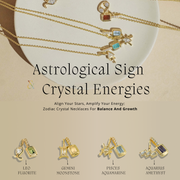Garnet History and Symbolism
The history of garnet dates back to ancient civilizations, and the name "garnet" is derived from the Medieval Latin word granatus, meaning "grain, seed," which likely refers to pomegranate seeds due to its similarity to red.
- Garnets have been used as gemstones and abrasives since the Bronze Age.
- Ancient Egyptian pharaohs wore necklaces inlaid with red garnets.
- Ancient Roman signet rings had garnet intaglios and were used to stamp wax paper that protected important documents.
- Red garnets were favored by medieval clergy and nobility.
It was believed to have protective powers and bring good luck to the wearer. It is also associated with love, commitment, and friendship.
Today, garnet is still seen as a symbol of love and commitment, and is also believed to boost energy, vitality, and creativity, making it an ideal gem for strengthening friendships or finding love.
Where are Garnet found?
Garnets can be found in many different regions and countries. In the Victorian era, Bohemia was the main source of red pyrope garnet, which was very popular.
Today, the African continent supplies most of the world's garnets. Namibia now produces alexandrite, while most of the bright green tsavorite on the market comes from Kenya, Tanzania, and Madagascar. Namibia and Tanzania are also the main sources of orange-yellow spessartine garnet.
For many years, the "Little Three Mining District" in Southern California was famous for producing this fascinating gem. It is also found in Myanmar, Brazil, Iran, Afghanistan, Pakistan, India, and Sri Lanka.
What color is Garnet?

Garnet comes in a variety of colors, each with similar but different chemical compositions, but it actually belongs to the same family of minerals. The most common color is red, but it also comes in many other colors, including yellow, orange, green, and even blue.
Therefore, color is the most important factor in the "4Cs" standard when evaluating the quality and price of garnets.
Typically, red garnets are the most common and affordable choice, while the rarer green garnets are much more expensive. Depending on their hue and lightness, lighter, more saturated, or "intense" red garnets are more expensive than darker garnets.
Types of Garnet
You'll often find garnets for sale described simply as "garnet." Sometimes sellers will note the specific composition of the garnet or describe it as the type of garnet that makes up the most of it.
However, no garnet is 100% pure chemically. All garnets are a blend of the chemical components of two or more garnets.

Garnet is actually a class of silicate minerals. There are two main solid solution series: Pyralspite series (almandine, pyrope, spessartine), and the Ugrandite series (andradite, grossular, uvarovite). Notable varieties of grossular include hessonite and tsavorite.
- Almandine and Pyrope and range in color from purple to red.
- Spessartine is bright orange and yellow.
- Andradite is mostly yellow to green
- Grossular has the widest range of colors, from colorless to yellow, to reddish orange and orange-red, and a rich bright green called tsavorite.
Pyralspite Garnets
Almandine

Almandine has nicknames such as Oriental Garnet, Almandine Ruby and Carbuncle.
This deep red transparent gem is often called precious garnet and is used as the most common garnet. Today it is called Carbuncle. The word comes from Latin, meaning "live coal" or burning charcoal.
The word "almandine" comes from Alabanda, a region in Asia Minor where this gem was cut in ancient times.
Almandine is found in metamorphic rocks such as mica schist, and is associated with minerals such as staurolite, kyanite and andalusite.
Pyrope

Pyrope, derived from the Greek pyrōpós, meaning "like fire".
Pyrope is particularly popular for its deep red color, which rivals ruby in color. But the magnesium in it can be partially replaced by calcium and ferrous iron, so the color of pyrope ranges from deep red to black.
A type of pyrope found in Macon County, North Carolina, is Violet-red and is called rhodolite, which means "rose" in Greek.
Pyrope is an indicator mineral of high-pressure rocks. Mantle-derived rocks (peridotite and eclogite) often contain pyrope.
Spessartine

Spessartine or spessartite is manganese aluminium garnet, its name is derived from Spessart in Bavarian.
It occurs most often in skarns, granite pegmatites and related rock types, and certain low-grade metamorphic phyllites.
Orange-yellow spessartine is found in Madagascar. Violet-red spessartine is found in rhyolite in Colorado and Maine. Pink, red, or yellow-orange spessartine can found in Malaia.
Pyrope-Spessartine (Color Change Garnet)

This is the rarest type of garnet. Due to its color-change properties, this garnet is similar to alexandrite.
Due to its high vanadium content, it changes from bluish-green to purple depending on the color temperature of the viewing light.
For example, the blue pyrope-spessartite garnet found in Bekili, Madagascar in the late 1990s appears bluish-green in daylight, but purple under incandescent light. One of these 1-carat color-change garnets sold for as much as $1.5 million!
This garnet is also found in parts of the United States, Russia, Kenya, Tanzania, and Turkey.
There are other varieties of color-change garnets. In daylight, their colors range from green, beige, brown, gray, to blue, but under incandescent light, they appear red or purple/pink.
Some almandine garnets from Idaho show a strong color change, from red to purple-red. Mali garnets may also appear grey-green under fluorescent light but brown under incandescent light.
Ugrandite Garnets
Andradite

Andradite is calcium-iron garnet, often appear in red, yellow, brown, green, or black. The Recognized varieties include demantoid (green), melanite (black), and topazolite (yellow or green).
Andradite is found in skarn and deep-seated igneous rocks such as syenite, as well as serpentinite and greenschist.
Demantoid is one of the most valuable varieties of garnet.
Grossular

Grossular is a calcium-aluminium garnet, the name grossular comes from the botanical name for gooseberry, "grossularia", and refers to a green garnet found in Siberia.
It come in nearly every color of the rainbow. However, they rarely come in red or dark colors.
Light mint green Grossular are particularly popular, other colors include cinnamon brown (cinnamon stone variety), red, and yellow.
They are also called "hessonite" (Greek for "inferior") because they are less hardness than zircon.
Grossular is commonly found in skarn, contact metamorphic limestone with vesuvianite, diopside, wollastonite and wernerite.
Grossular garnet from Kenya and Tanzania is called Tsavorite. Tsavorite was first discovered in the Tsavo region of Kenya in the 1960s, hence the name.
Uvarovite

Uvarovite is a calcium chromium garnet and it is the rarest member of the garnet family.
It has a bright green color and is usually found in the form of small crystals with chromite in peridotite, serpentinite and kimberlite.
However, they are usually too small and opaque to be cut into jewellery gemstones.
It is commonly found in crystalline marble and schist in the Ural Mountains of Russia and Outokumpu, Finland.
Uvarovite is named after Count Uvarov, a Russian imperial politician.







